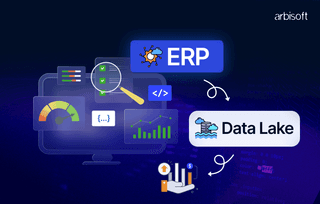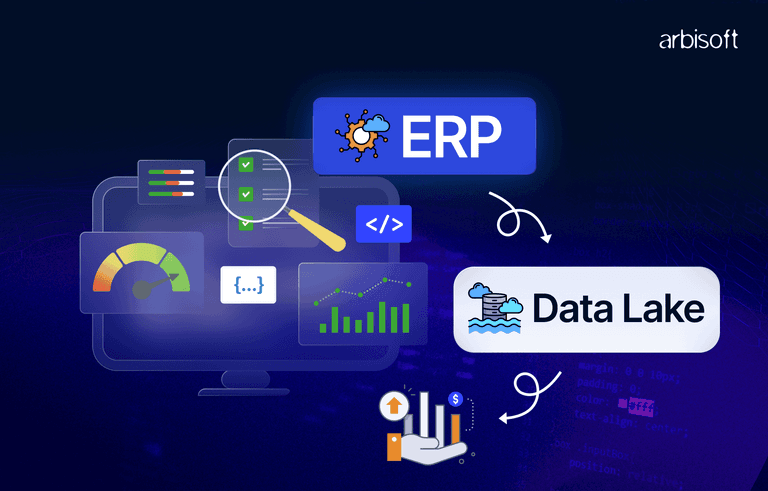We put excellence, value and quality above all - and it shows




A Technology Partnership That Goes Beyond Code

“Arbisoft has been my most trusted technology partner for now over 15 years. Arbisoft has very unique methods of recruiting and training, and the results demonstrate that. They have great teams, great positive attitudes and great communication.”
AGI Explained: The Future of Artificial Intelligence

Ever thought of having an AI that could do everything – from keeping track of your schedule to solving problems you didn’t even know existed? Right now AI helps with things like reminders, directions, and recommendations. But what if it could actually understand and learn like a human?
That’s the goal of Artificial General Intelligence (AGI). AGI is a type of AI that can solve problems, adapt, and learn across different domains, just like humans do. Dario Amodei, CEO of Anthropic, is working on it. His team has built Claude, the AI model.
Dario talked to Lex Fridman about AGI, what it means for the future and the consequences. Here’s what he said.
1. The Scaling Law: Why Bigger Models Are Better
One of the key ideas in today’s AI world is the scaling law, which simply means that making models larger, by adding more data and making networks more complex, leads to better results. Amodei compares this to cooking: the more ingredients you add, the richer the flavor. In AI, the more data and processing power we use, the smarter and more capable the models become—a transformation fueled by ai and data science services that drive these breakthroughs.
This scaling idea is a big part of how Anthropic works. Amodei’s early work with speech recognition models showed him that as models grew, their accuracy and performance improved. Today, Anthropic pushes this idea further with Claude, one of the most advanced AI models. By pushing the limits of what these models can process, Amodei believes we might soon have machines that think and learn much more like people.
2. AGI: A Near-Future Reality?
The idea of AGI, a machine that can think and reason like a human, is both exciting and a little intimidating. Many see AGI as the ultimate goal for AI, marking the point when machines go beyond just doing tasks to truly understanding and learning. According to Amodei, we could reach this level as early as 2026 or 2027 if AI development keeps moving at its current pace.
Of course, there’s a chance AGI could be further off, but Amodei believes the progress makes long delays seem less likely. With AI capabilities improving so fast, it feels more and more possible that AGI is just around the corner. This opens up big questions about how to guide AI as it becomes more powerful and what responsibilities we have in using it wisely.
3. Misuse of AI and its dangers
While AGI holds a lot of promise, Amodei is also aware of its risks, especially regarding power and control. As AI becomes more advanced, it could concentrate a lot of influence in the hands of a few powerful companies or governments. Without careful control and fair policies, this power could be misused in ways that harm society.
Amodei isn’t alone in this concern; many tech leaders worry about the misuse of AI’s growing power. If these powerful systems aren’t used responsibly, they could worsen existing problems, like inequality and economic control. Amodei believes that the key to avoiding these issues is to create AI transparently and ethically, and he’s committed to these values at Anthropic.
4. The Race for AGI: Not Just About Winning
Anthropic isn’t the only one working hard to create AGI. Big companies like OpenAI, Google, xAI, and Meta are also pushing forward, each with its own strengths and resources. But for Dario Amodei, it’s not just about being the first to reach AGI, it’s about doing it the right way and making sure it helps humanity.
Dario calls this the “race to the top,” meaning the focus should be on building AGI that is safe, ethical, and trustworthy, not just on getting there quickly. At Anthropic, they put a lot of effort into making their models clear and understandable. By focusing on safety and transparency, Dario hopes Anthropic can set a high standard for others to follow.
5. Future Challenges: Limited Data and Creative Solutions
As exciting as AGI is, Amodei knows there are still challenges to solve along the way. One big issue is the limit of high-quality data available to train models. With only so much high-quality information available, models could eventually run out of the material they need to learn effectively, emphasizing the need for predictive analytics solutions to optimize data utilization. However, new ideas like creating synthetic data (fake but realistic information) are helping to stretch these limits.
Another promising area is reinforcement learning, where models learn by trial and error, and reasoning models that are better at making logical connections. These methods, combined with ever-improving hardware, mean the path to AGI may be less blocked than it seems, giving hope that we can keep pushing forward.
Looking Forward: The Responsible Path to AGI
For Dario Amodei, building AI is about more than just making machines smarter. It’s about making sure these machines help people in a good way. In his chat with Lex Fridman, he talked about how exciting AI is, but also how important it is to be careful with it.
As we get closer to AGI, the choices we make now will affect the future. Dario and his team at Anthropic are focused on doing things the right way, and being open and ethical. They believe that how we build AGI is just as important as when we get there.
In the end, it’s not just about getting AGI quickly, it’s about using it to make the world better. Dario and Anthropic are leading by example, hoping others will do the same.
























